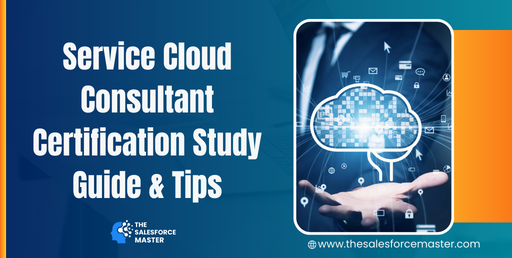
Scalable Data Models in Salesforce: Best Practices for Architects
Designing scalable data models in Salesforce is crucial for ensuring optimal performance, data integrity, and long-term system sustainability. As businesses grow, their Salesforce ecosystems must evolve to handle increasing volumes of data and complex workflows. This article outlines the best practices for architects to build scalable data models while integrating the flexibility needed for future changes.
Understand the Core Principles of Data Modeling
Data modelling in Salesforce starts with understanding its core principles. Whether you’re working with Salesforce Sales Cloud, Marketing Cloud, or any other module, the underlying foundation is crucial. Architecting scalable data models requires a strategic approach that takes into account:
- Object Relationships: A solid grasp of the different types of object relationships in Salesforce (lookup, master-detail, and many-to-many) ensures your data is connected efficiently. Architects should balance simplicity and function while modeling these relationships to maintain scalability as the organization grows.
- Data Normalization: Avoid redundancy by normalizing your data. This principle helps architects structure data models that are easier to maintain, query, and scale. Always consider how the data will expand over time, keeping scalability in mind when creating custom objects and fields.
- Performance Optimization: Scalable models prioritize performance. Use indexing where possible and be mindful of how reports, dashboards, and queries will perform on large datasets. It’s vital to predict potential performance bottlenecks early on and design around them.
Optimize Data Management for Scale
Efficient data management is key to scaling Salesforce environments. As architects, the goal is to ensure that Salesforce can manage increasing data volumes without sacrificing speed or reliability. By using Salesforce Marketer’s advanced features, architects can easily integrate tools to help streamline this process.

- Leverage Data Archiving: Regularly archiving unused or old data ensures your system stays agile. Salesforce has data retention policies that can help, but custom archiving strategies may also be needed for more complex setups. Be sure to optimize your Salesforce Login for smooth data retrieval when archived information is required.
- Use Salesforce Shield: For organizations handling sensitive data, Salesforce Shield provides event monitoring, encryption, and audit trails, ensuring data security and compliance. Shield’s scalability options are important for architects as they build systems that meet both performance and regulatory needs.
- Optimize API Usage: Using the Salesforce REST and SOAP APIs allows for smooth integrations and automation. Architects should minimize API callouts to optimize system performance and avoid hitting Salesforce governor limits.
Maintain Data Governance and Quality
For Salesforce architects, maintaining data quality is paramount. A scalable data model must allow for consistent, clean data that all departments can trust. Poor data quality leads to inefficiencies, miscommunication, and revenue loss, especially as organizations scale.
- Enforce Data Validation Rules: Data validation rules in Salesforce enforce consistency. These rules ensure that data entered into Salesforce meets predefined criteria. Use them effectively to maintain clean and actionable data across large datasets.
- Automate Data Cleansing: As your Salesforce organization grows, manually cleaning data becomes impractical. Implement automated processes using Salesforce Flows or other third-party tools to remove duplicates, standardize data, and correct errors automatically.
- Define Clear Data Ownership: Architects must collaborate with stakeholders to define data ownership clearly. This step ensures accountability for data quality and helps streamline maintenance. Use Salesforce Marketer to assign owners for key marketing data like leads and campaign performance metrics.
Conclusion
Creating scalable data models in Salesforce requires a proactive and strategic approach. Architects must balance flexibility, performance, and data integrity to build systems that can grow alongside the organization. By following these best practices—understanding core principles, optimizing data management, and maintaining data governance—you can design Salesforce data models that stand the test of time. With Salesforce Marketer, architects can further enhance their solutions, ensuring that marketing and other teams are aligned and ready to scale as the business expands. By maintaining scalable models, businesses can focus on growth without being hindered by their CRM infrastructure.
Explore Our Latest Articles:
Salesforce Login | Salesforce Admin | Salesforce Marketer | Free Salesforce Certification Coupons | Salesforce Interview Exam Questions



